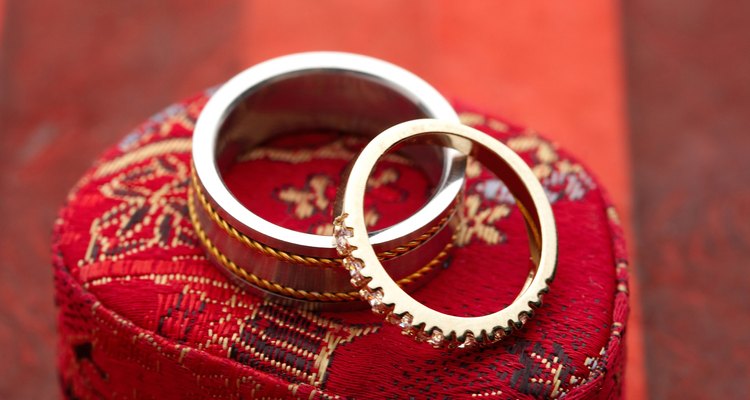
Jupiterimages/Photos.com/Getty Images
The traditional Latin Mass is a beautiful ceremony and many people feel there is no more sacred way to enter into the sacrament of marriage. However, there are a number of factors you should consider if you a considering one for you wedding day. In the end, you may decide a more-modern mass is better suited for your wedding. However, if you are willing to put forth the effort to plan a traditional wedding mass, the rewards may last a lifetime.
Understand the basics of a traditional Latin Mass wedding. The mass is performed according to the Tridentine Rite, and the entire Mass is in Latin. The priest conducts the liturgy facing the altar, and everything happens strictly and precisely according to the rubrics (instructions). The congregation follows the Mass in private prayer and doesn't play an active part
Find a priest who is versed in the traditional Latin Mass to perform the wedding. If you do not attend a parish where the Tridentine Mass is regularly said, find a priest or parish in your area where the traditional Latin Mass is held. However, you will need permission from your parish for an outside priest to perform your wedding mass. This will take coordination with your parish staff and the parish priest. Be aware that unlike a modern Mass that can be said jointly by several priests (concelebrants), typically only one priest is allowed to say the traditional Latin Mass.
Officially announce your intent to marry to your priest. The priest will then publish what is called the "banns of marriage," a traditional public announcement of the coming marriage. The banns are typically published on three consecutive Holy Days in the church bulletin; alternately, they can be announced during the mass. Obviously, banns are not a usual practice in the modern church and are not necessarily a requirement.
Understand that the dress of the wedding party should conform to the same rules of decorum that apply any time a woman enters the church for a traditional Latin mass. The focus is on modesty. Typically, the heads of all female participants are covered with a veil, and dresses should fall below the knees, both when standing and sitting. The dress neckline should be modest and arms should be at the very least partially covered, which rules out bridsemaids' dresses with spaghetti straps.
Share the dress code with your guests and provide chapel veils for the women. A possible addition to your wedding invitation would be: "Out of respect for Our Lord, the bride and groom request that women refrain from wearing slacks or dresses that are sleeveless, low-cut or above the knee. Ladies are further asked to cover their heads upon entering the chapel. Chapel veils will be available at the ceremony."
Select only sacred music for the wedding. For a traditional Latin Mass, you shouldn't use popular tunes or ballads. Do not expect to be able to use the Wagner's or Mendelssohn's wedding marches, as some Catholics do not consider them sacred music.
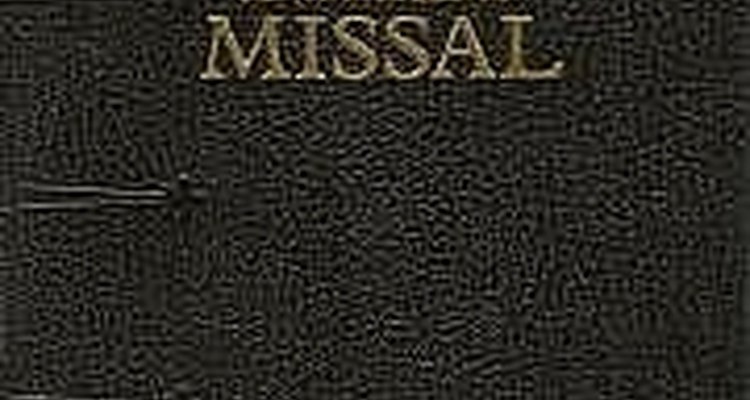
Remember that the mass will be in Latin. For your guests, purchase or create missals, Latin-to-English translations, to help them understand the mass. Include the entire Mass, along with instructions for when to sit, stand and kneel.You may wish to include brief explanations of what the priest is doing at specific points in the mass. You will also want to include instructions concerning who is allowed to receive communion. Word the instructions as tactfully as you can. This will prevent any confusion from your guests and avoid any hard feelings.
It also will be helpful to have someone sitting in the front who understands the traditional mass. This will give the other guests someone to watch when it is time to kneel, stand, or sit.

If you are not accustomed to kneeling, start practicing. There will be long intervals when you are required to kneel during the mass. With practice you can become comfortable kneeling for long periods of time.
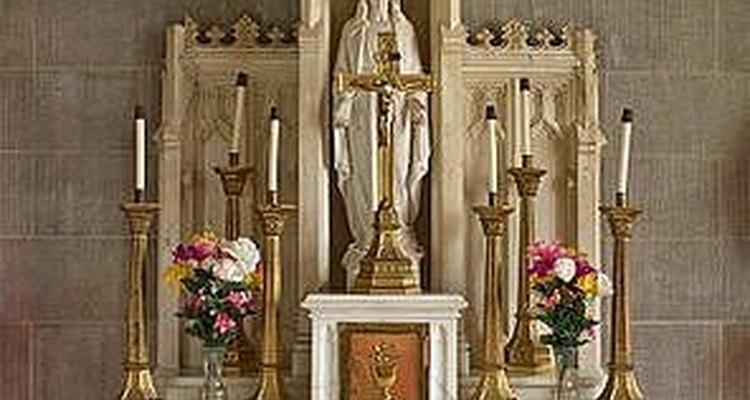
It is a beautiful custom for the bride to place her bouquet (or other flowers) at the statue of the Virgin Mary. The Bride can kneel at the statue and pray for Mary to help her in her duties as a wife and future mother. Traditionally this symbolizes the bride offering her own virginity (flowers) to Our Lady, in return for Mary's prayers that she will have a fruitful marriage.
The groom can also light a candle at the statue of St. Joseph. Praying for guidance and strength to be a good husband and father.
Hopefully all these tips will help you plan your Traditional Catholic Wedding Mass. Your priest can provide further guidance and advice. We also suggest reading the section of the missal outlining the sacrament of marriage.
Related Articles

Wedding Prayers of the Faithful

Mandatory Legal Phrases for Wedding Vows
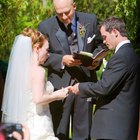
What a Minister Says at a Wedding

The Common Procedures of a Catholic ...

Mexican Catholic Wedding Traditions

Christian Wedding Prayers and Blessings

Etiquette for a Buddhist Wedding

Methodist Wedding Ceremony Program

Role of a Godmother During a ...

Seventh Day Adventist Wedding Ceremony

Wedding Ceremony Sequence of Events
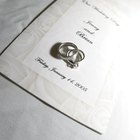
How to Write a Sample Wedding Program

How to Dress for a Bris Ceremony

The Wording for a Simple Wedding ...

Wedding Etiquette for Stepparents

What Do Guests Wear to an Indian ...

Teen Etiquette for a Bar/Bat Mitzvah

What Is the Benediction in a Wedding ...

How Do You Address Wedding Invitations ...

Duties of Honorary Bridesmaids
Writer Bio
This article was written by the CareerTrend team, copy edited and fact checked through a multi-point auditing system, in efforts to ensure our readers only receive the best information. To submit your questions or ideas, or to simply learn more about CareerTrend, contact us [here](http://careertrend.com/about-us).
Photo Credits
Jupiterimages/Photos.com/Getty Images